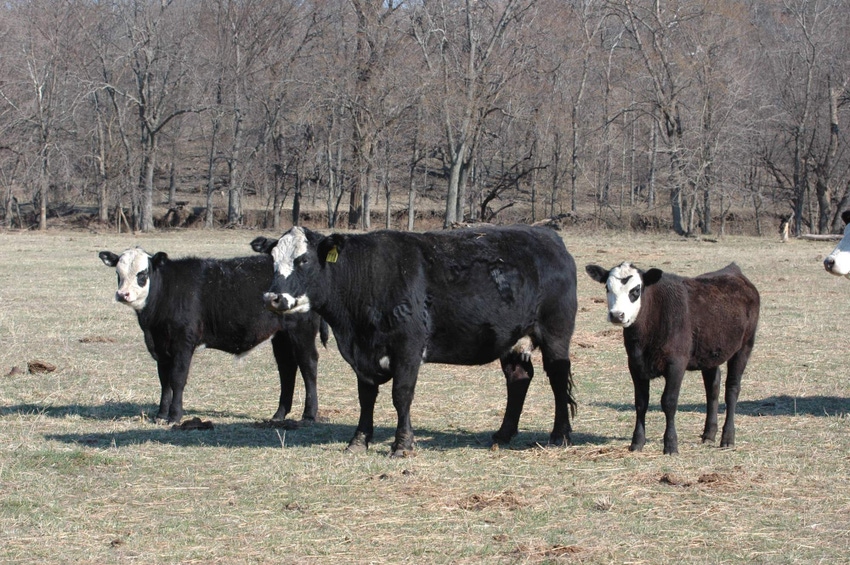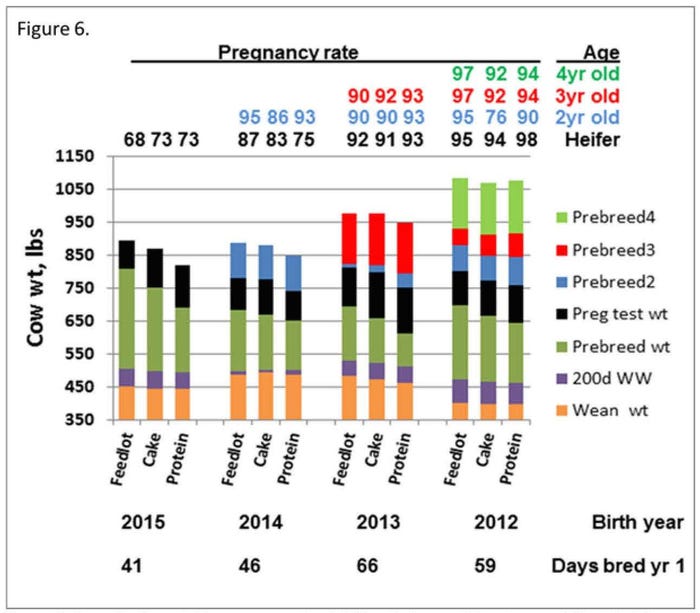Previous blogs on how much to feed a heifer generated a question from a reader on when to breed heifers. Here’s the answer.

My past two blogs looking at a 10-year study underway at the Fort Keogh Livestock and Range Research Laboratory at Miles City, Mont., generated a question from a reader. He noted the information that many heifers are weaned around 650 pounds, while the heifer calves from the composite study herd at Fort Keogh wean around 450 pounds.
His question: If his heifers wean at 650 pounds and are cycling at weaning, can he breed them then?
Read: How much to feed a heifer? That is the question
Read: How much to feed a heifer Part II
The best answer I could come up with was if he’s trying to stick to a defined breeding and calving season, breeding heifers early would play havoc with the schedule. But I haven’t seen any research that looks into early breeding. So I passed the question on to Andy Roberts at Fort Keogh. Here’s his response:
“To the best of my knowledge, your question has not been subjected to in-depth study. However, as you probably are aware, it is not uncommon for heifer calves to get bred if bulls are not removed before weaning, resulting in calving before 1.5 years of age.
“In my opinion, the most critical factor that needs to be evaluated is what the effect of early-in-life breeding has on longevity. While numbers are small, my personal experience is that heifers that calve around 1.5 years of age will calve OK if the sire of the calf provides sufficient calving ease. The additional nutritional demand of pregnancy and lactation at the earlier stage of development can result in the heifer being smaller (stunted) throughout some or much of her life, especially if the pregnancy is unexpected and the heifer is not managed nutritionally to account for pregnancy.
“While the smaller size may seem to be a negative, it may actually provide for improved biological efficiency due to reduction in maintenance requirements (smaller cows need less than bigger cows). We create a similar response (smaller cow size) in heifer calves we develop over the winter on native range with minimal supplemental feed. These heifers grow much slower, and may even lose weight during December-February, compared to development in the feedlot or on range with 4 pounds of cake per day.
“The graph below shows that differences in rate of growth during post-weaning development, depicted by height of the olive-colored bars, remain evident in subsequent weights out to three years of age. The smaller heifers represented in the graph have greater proportion of calf weight to cow weight at weaning than their heavier counterparts.

Figure 6 shows body weight measurements at different stages of development (depicted in legend) for 3 different post-weaning treatment groups over the years. Heifers were developed in the feedlot (Feedlot) or developed on native range with 4 lbs cake/d (Cake) or a self-fed .25 to .5 lb protein+mineral supplement/day (Protein:).
Year of birth and development treatment are shown on x-axis. The numbers shown in black, blue, red or green above each bar denote pregnancy rates at 1, 2, 3 and 4 years of age, respectively. Numbers on the bottom of the graph denote length of the first breeding season.
No differences in first breeding pregnancy rate were observed for heifers born in 2012, 2013 or 2015. Pregnancy was lower in 2014 born Range + Protein heifers. This lower pregnancy rate is associated with a lower rate of gain during the breeding season in the Range + Protein heifers than feedlot heifers (compare size of black bars in Figure 6).
The lower rates of gain and decreased pregnancy rate observed in the 2014 Range + Protein heifers trace back to a greater number of heifers from one sire allocated to this post-weaning treatment than the other two treatments. Pregnancy rates for the 2015 heifers differed due breeding herd, with 88 and 53% pregnancy rates observed for the two herds (heifers stratified by treatment to the 2 breeding herds).
“While these data aren’t associated with early breeding, the take home from this is that heifers that are bred before one year of age may be smaller throughout life, and this could have a positive effect on efficiency if proportion of calf production to cow weight remains equal to or exceeds that in heifers bred to calve at two.
“As Burt points out, the impact of breeding at an age earlier than 13-15 months on coordination with calving season for the rest of the herd needs to be considered, as this this will affect marketing of the calves and subsequent management of the heifers (timing of shots, etc). However, having multiple calving seasons may provide alternatives to help deal with this.
“Last year, an individual I run cattle with had a spring-born heifer calve at about 16 months of age, about four months behind his spring calving herd. This particular individual also runs a fall calving herd, and the early calving heifer was put into the later breeding season and became pregnant.
“So by the time the heifer is around 2.5 years old, she will have two calves. So breeding heifers early may have a place for producers operating with two calving seasons. The University of Nebraska has conducted a study on breeding heifers at less than one year of age to move them backwards into an earlier calving season than they were born in (i.e., born in a summer calving season and bred for a spring calving system). At this time they do not have data past the first calving analyzed, but will be looking at it.”
About the Author(s)
You May Also Like



